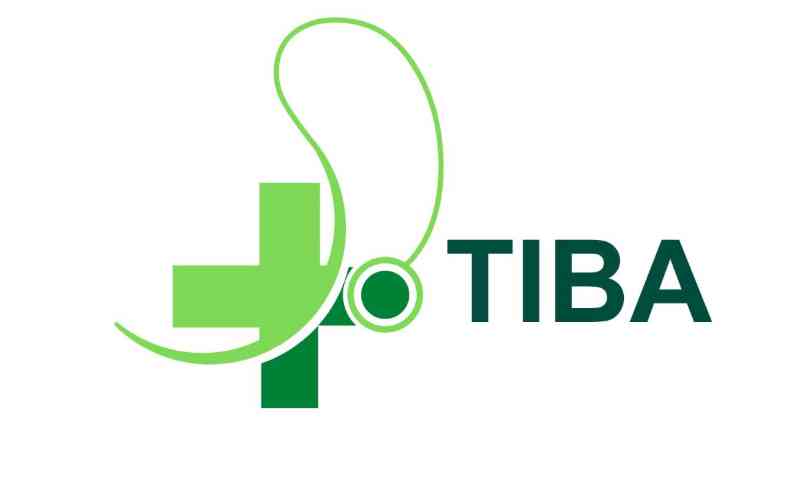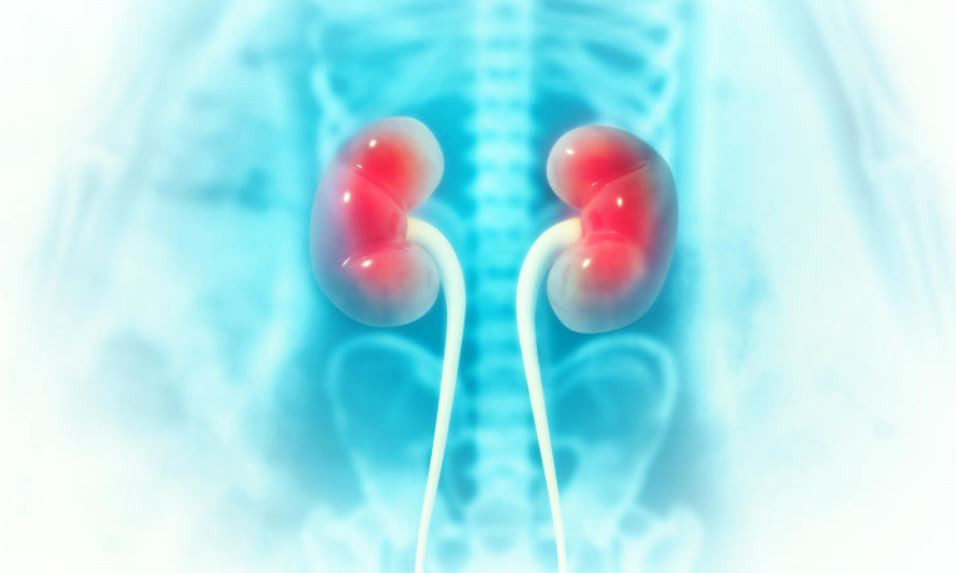
A migraine is a neurological condition marked by severe, debilitating headaches on one side of your head. [File, Standard]
In 2008, Brian Wangila started having headaches that slowly but surely turned into migraines. He has since done all he could to end the excruciating pain and suffering that comes with the neurological condition but to no avail.
“It’s really bad, and I wouldn’t wish it on anyone. My years as a migraine sufferer have been the absolute worst years of my life,” he narrates.
A migraine is a neurological condition marked by severe, debilitating headaches on one side of your head, that last anywhere from a few minutes to several days and weeks. When one gets the said painful headache for over 15 days in a month, doctors define that as chronic migraines.
For Wangila, this is his fifteenth year suffering from migraines and 10 years since they were diagnosed as chronic.
“Take away the migraines, I am very healthy. I had been lucky to be very healthy growing up; the only time I’d been in hospital was for a broken arm from the usual boys being boys,” says the 32-year-old software engineer.
Like most people, Wangila used to think a migraine is just but a bad headache; until he got one. However, this is still the impression most people get even after he explains to them what he goes through.
“You can imagine how annoying it gets when you’re in excruciating pain and somebody is trivialising it without understanding it,” he says.
Wangila has been suffering from migraines for so long that he cannot remember a day he was not in pain.
“I actually can’t remember how it feels not to be in pain. I have a pain scale to be able to track the days. 0–11, 0 being no pain and 10 being extreme pain.”
According to Wangila, a good day is 0–4. Four is what most people consider to be a very bad headache and would probably call in sick. “On such a day, we can have a conversation, laugh, and make jokes, I can go out for a bit, reply to some emails, get some work done and do a few things.”
A bad day is a 5–7. This, he says will have him indoors, mostly in bed or sitting quietly.
“I’m usually fatigued so movement is limited. I have nausea and lack appetite. Conversations are limited to the bare minimum,” he narrates.
A very bad day according to Wangila is 8–11.
“Here, I’ve probably been having a sustained migraine for over a day. I’m in so much pain I barely leave my bed. Almost no movement or conversation. Probably headed to the hospital for an admission to manage the pain”
The constant excruciating pain drove Wangila into depression and desperation. He would do anything and everything to try to get rid of it even if it didn’t make sense.
“The financial burden that came with it was huge. At some point, the full panel of neurologists in Kenya sat down to analyse my case and come up with a solution, to no avail.”
I have seen psychiatrists and psychologists who thought the migraines were a manifestation of some deep-seated emotion but also that didn’t work. I sought further treatment in India and that helped for a while when they administered a Botox procedure.”
Wangila has had four Botox procedures for the treatment of migraines administered to him here in Kenya with varying success, but “the last one just plain made no difference” he says.

Anyone experiencing recurrent headaches should not ignore them. [iStock]
Wangila says he has been ripped off by doctors who used alternative medicines like acupuncture and laser therapy, but they still did not work.
In search of a lasting solution, Wangila would always exhaust his medical cover and would have to dig into his pockets for treatment. He had to look for foreign insurance covers because the local ones were limited.
“I had Sh1 million admission cover for a whole year but that would be the cost of one admission which took 10 to 12 days. I would be admitted at least four times a year,” he says.
Luckily in 2019, he got a new medication that helps reduce the severity of his headaches and migraines with no side effects, unlike the previous ones which would cause nausea, dizziness, and fatigue among others. It is in form of an injection that has to be imported and costs him every month. “It is that expensive because it is not locally available,” he explains.
MickReen Adhiambo, a gender and development practitioner has also been suffering from migraines. She cannot remember a time in her life when she was free from the pain.
Adhiambo says she had been trivialising it until 2018 December when she was admitted three times in that year and was diagnosed with migraines. For her, it has been “tough, crazy and painful.”
“My friends and colleagues say my house is a pharmacy because it is full of migraine and headache medications.” She says if she would not have a medical cover, it would have been tough.
“I would spend about Sh3,700 for painkillers only, minus consultation and admission fees.”
Sarah Wairimu, a journalist also suffers from migraines. It has been 21 years of pain, agony, and financial constraints related to headaches and migraines.
“When it gets to level six, I have to call in sick and stay indoors. I switch off the lights and lie still because anything else I do makes the migraines worse.”
I use a codeine-based painkiller which is now not readily available. I have to go to the hospital for a prescription. I find it daunting and expensive,” she laments.
It was pulled out from pharmacies and made a prescription-only drug because of the codeine, which is addictive.
According to Wairimu, a pill costs Sh25, “and I take two pills twice a day in the morning and evening... I try to take it once because I know it’s addictive, but sometimes the pain is just too much I have to take more,” she adds.
Other medications that Wairimu takes are for migraines which according to her, are also costly. She exhausts her insurance cover way before the year ends and has to pay in cash.
“One costs Sh500 a pill. I take it about four times a month but sometimes I may take more... like 10 times in a month.”
Wairimu explains that it is not possible to buy a single pill so she has to buy it in packets. One packet goes for Sh2,000.
“I try to take it less than ten times in a month because taking too much can create resistance and overdependence.”
Another medication she says is even more expensive.
“It goes for Sh1,500 a pill. I take it about four times a month when my migraines are at level eight to 11.”
A packet has six pills which cost Sh9,000.
“My cover always gets exhausted because of the medications and the MRI tests that I have to go through every time I have a very bad headache or a migraine attack... What pains me most is that doctors have not found the root cause of this problem,” she says.

There’s no cure for a migraine. [iStock]
According to Dr Samson Gwer, a neurologist, anyone experiencing recurrent headaches should not ignore them.
“Get thorough medical check-ups to ascertain that the headache or migraine is not caused by an underlying condition such as a vision problem, a tumour, or an infection,” he advises.
Dr Gwer also says the financial bit can be straining. Treatment and prevention depend on how much of what you need. The severity of the headaches or migraines is going to determine how much you will spend on treatment.
“It may be as easy as getting Panadol and avoiding triggers... or it can be as complex as getting admitted and using the high-end medication,”he explains.
Dr Gwer also says that some migraines are genetic and people suffering from such should work closely with a specialist to help minimise the severity of the condition.
“Before you climb the ladder to take the stronger and expensive medication, try and start with the basic ones as advised by your doctor. You should also avoid triggers such as too much light, too much noise, or too much activity around you. Also, get enough rest, and maintain a good sleep routine,” adds Dr Gwer.
He also advises patients to keep a migraine diary to understand the nature of their migraines.
“A diary will help you to track when they occur, under what circumstances, what medications work, and probably the foods you should avoid,” he says.
He adds that there are apps that can help you track your migraine. Once you identify the triggers you will be able to avoid them and take care of the pain before it comes.
Painful fact: There’s no cure for a migraine
The World Health Organization considers migraines to be the sixth most disabling disease in the world.
Despite how painful and widespread migraines are, treatments are limited – the first thing you learn when you see a migraine specialist is that there’s no cure. There’s also no treatment that’s specifically designed to prevent the attacks.
All the preventive medications are designed to treat other conditions, like hypertension and depression. The drugs aren’t very effective — they work in about half of patients — and they often have adverse side effects, like weight gain, fatigue, and difficulty in thinking and speaking clearly.
Headache disorders impose a recognisable burden on sufferers including sometimes substantial personal suffering, impaired quality of life, and financial cost.
Repeated headache attacks, and often the constant fear of the next one, damage family life, social life, and employment.
The long-term effort of coping with a chronic headache disorder may also predispose the individual to other illnesses. For example, anxiety and depression are significantly more common in people with migraine than in healthy individuals.
Globally, it has been estimated that the prevalence among adults of current headache disorder (symptomatic at least once within the last year) is about 50 per cent.
Half to three-quarters of adults aged 18–65 in the world have had a headache in the past year and, among those, 30 per cent or more have reported migraine.
Headache on 15 or more days every month affects 1.7–4% of the world’s adult population. Despite regional variations, headache disorders are a worldwide problem, affecting people of all ages, races, income levels, and geographical areas.
Source: World Health Organization
 The Standard Group Plc is a multi-media organization with investments in media
platforms spanning newspaper print
operations, television, radio broadcasting, digital and online services. The
Standard Group is recognized as a
leading multi-media house in Kenya with a key influence in matters of national
and international interest.
The Standard Group Plc is a multi-media organization with investments in media
platforms spanning newspaper print
operations, television, radio broadcasting, digital and online services. The
Standard Group is recognized as a
leading multi-media house in Kenya with a key influence in matters of national
and international interest.











